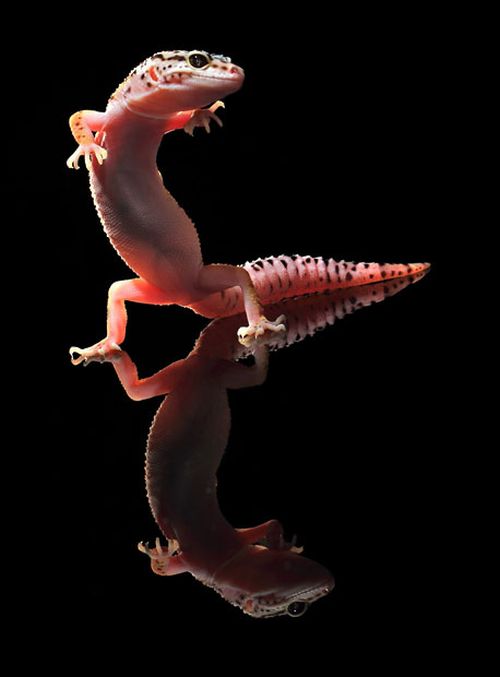|
|
Dancing Gecko Lizard
|
The toes of the gecko have a special adaptation that allows them to adhere to most surfaces without the use of liquids or surface tension. The spatula tipped setae on gecko footpads allow attractive forces called capillary forces to arise between the adhesive setae and the surface.
One study suggested that capillary adhesion might play a role, but that hypothesis has been rejected by more recent studies.
These van der Waals interactions involve no fluids; in theory, a boot made of synthetic setae would adhere as easily to the surface of the International Space Station as it would to a living room wall, although adhesion varies with humidity. The setae on the feet of geckos are also self cleaning and will usually remove any clogging dirt within a few steps. Teflon, which has very low van der Waals forces, is more difficult for geckos to adhere to than many other surfaces.
Geckos' toes seem to be "double jointed", but this is a misnomer. Their toes actually bend in the opposite direction from our fingers and toes. This allows them to overcome the van der Waals force by peeling their toes off surfaces from the tips inward. In essence, this peeling action alters the angle of incidence between millions of individual setae and the surface, reducing the Van der Waals force. Geckos' toes operate well below their full attractive capabilities for most of the time. This is because there is a great margin for error depending upon the roughness of the surface, and therefore the number of setae in contact with that surface.
|
|









